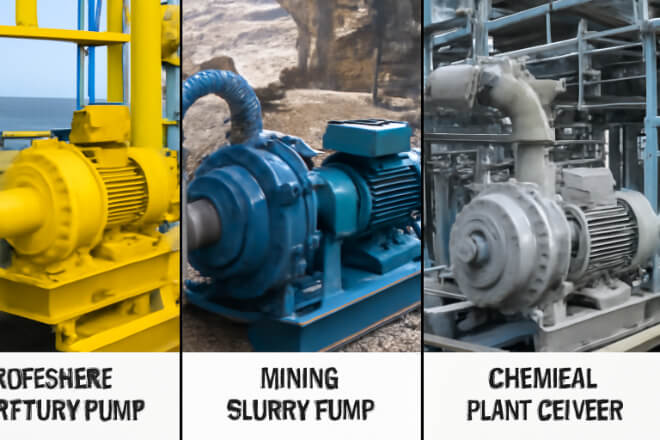Handling corrosive liquids or gases is one of the toughest jobs for pumps, compressors, and バルブ.
の シールリング inside this equipment face chemical attack, pressure changes, and constant friction. Two popular choices—nickel-binder carbide rings and cobalt-binder carbide rings—look similar but behave differently under stress.
This decision guide compares the two binder types, explaining their unique properties, best use cases, and tips for choosing the right one for corrosive environments.
Understanding Binder Materials
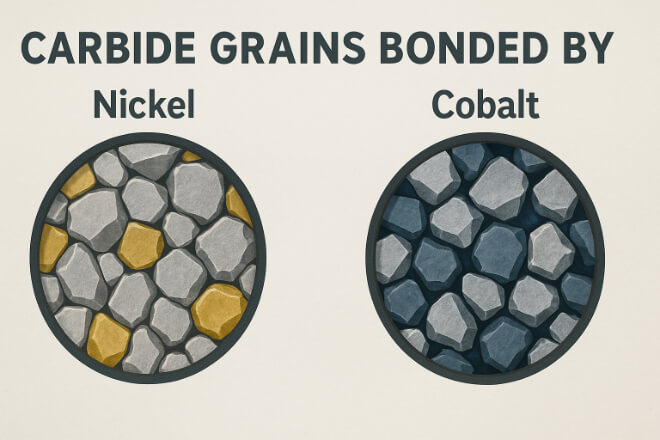
Tungsten carbide on its own is extremely hard but brittle. A binder metal (nickel or cobalt) is added to improve 強靭さ and bonding between carbide grains.
The binder changes how the seal ring reacts to chemicals, temperature shifts, and mechanical loads.
Nickel-Binder Carbide Rings
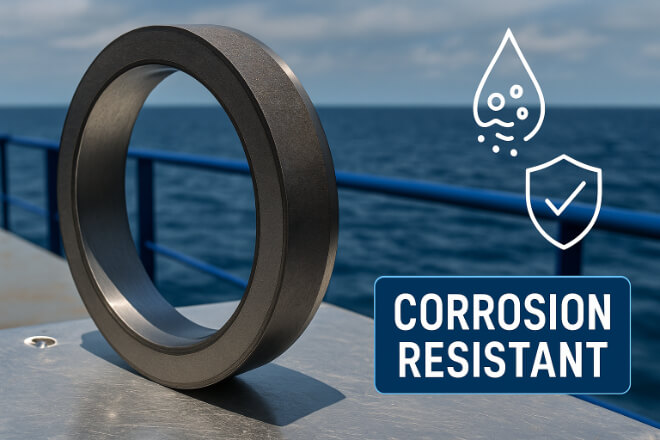
Nickel-binder grades are engineered for chemical stability.
1). Key Strengths
優れた 耐腐食性 to acids, alkalis, and seawater.
Non-magnetic, useful for equipment with sensors or magnetic drives.
Reliable performance in marine and chemical processing
環境。
2). Drawbacks
Less impact resistance in high-shock systems.
Higher purchase price than many cobalt-binder options.
3). Common Uses
Pumps transferring brine or aggressive chemicals.
LNG and cryogenic equipment exposed to condensation and salt.
Food-grade or pharmaceutical systems where corrosion is unacceptable.
Cobalt-Binder Carbide Rings
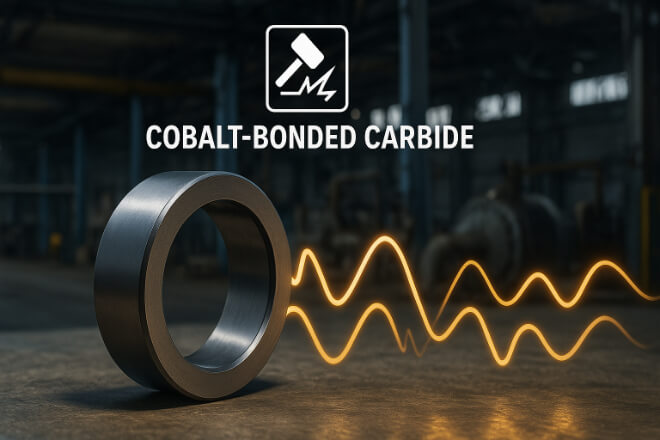
Cobalt-binder grades focus on mechanical toughness.
1). Key Strengths
Excellent shock and vibration resistance in pumps and mixers.
Handles sudden pressure spikes or shaft movement without cracking.
Typically more affordable and widely available.
2). Drawbacks
Less corrosion resistance in acidic or salty conditions.
Magnetic properties may interfere with sensitive instruments.
3). Common Uses
Mining slurry pumps and paper mill refiners.
Boiler feed pumps or compressors with stable fluids.
High-vibration industrial agitators or mixers.
Direct Comparison
| Aspect | Nickel-Binder | Cobalt-Binder |
|---|---|---|
| 耐薬品性 | Excellent for corrosive fluids | Moderate in corrosive environments |
| Shock Resistance | 適度 | High toughness for vibration |
| Magnetic Properties | Non-magnetic | Magnetic—may affect sensors |
| 最適なアプリケーション | Seawater, acids, caustics | Mining slurry, boiler feed pumps |
| Relative Cost | より高い | より低い |
Decision Framework for Choosing a Binder
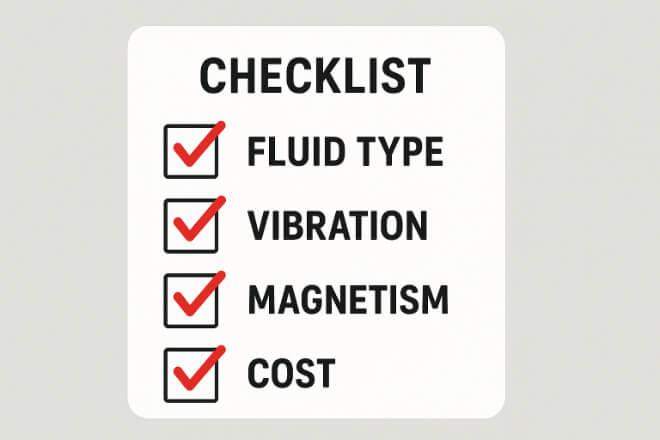
1). Identify Fluid Chemistry
Strong acids or seawater → Nickel-binder.
Clean water or non-corrosive fluids → Cobalt-binder.
2). Assess Mechanical Loads
High vibration or shaft deflection → Cobalt-binder.
Stable, low-vibration systems → Nickel-binder for 耐腐食性。
3). Consider Equipment Sensitivity
Magnetic interference risk → Choose nickel-binder.
4). Review Budget and ROI
Nickel’s higher price may pay off if corrosion failures are expensive.
Maintenance Tips
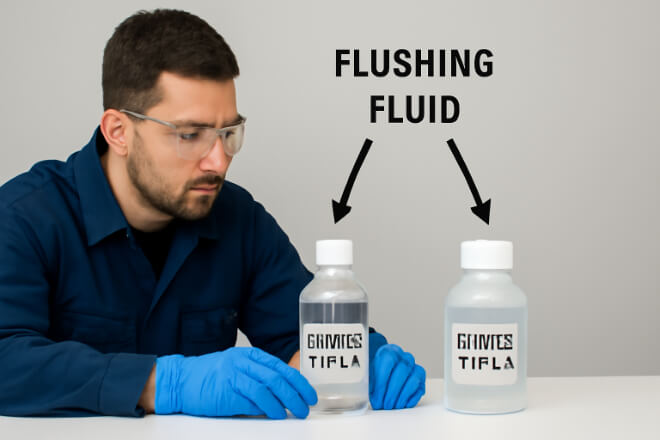
Inspect during planned outages for pitting or cracking.
Replace as pairs to maintain sealing balance.
Use proper flushing systems to remove particles.
Store spares in clean, dry conditions to prevent contamination.
コストとROIの洞察
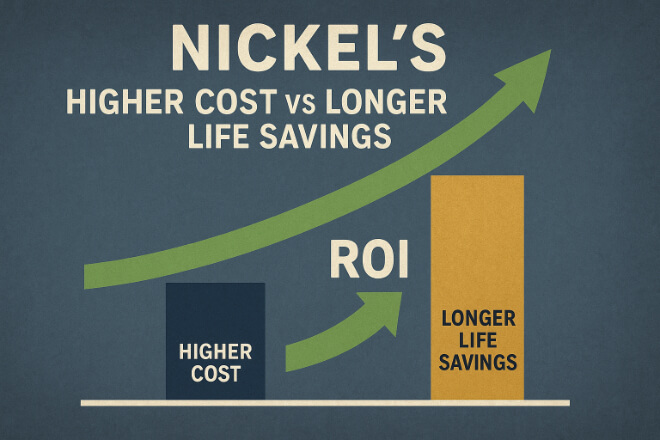
Nickel-binder’s cost is higher but prevents expensive corrosion failures.
Cobalt-binder reduces upfront costs for less aggressive fluids.
Correct choice extends service life by 30–50%, improving uptime.
環境と安全に関する考慮事項
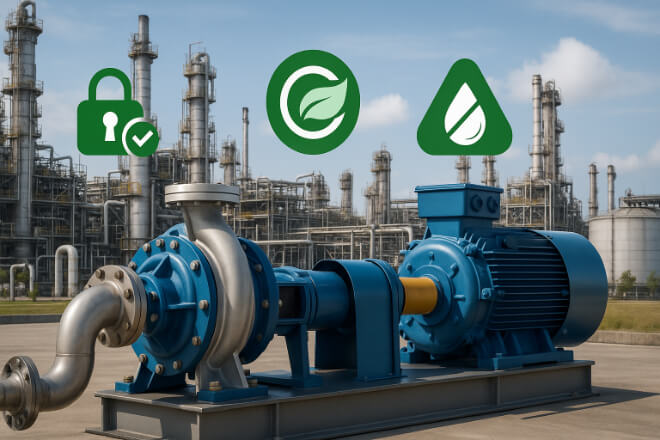
Proper binder choice prevents leaks of hazardous fluids into the environment and reduces workplace risks. Reliable sealing also supports compliance with chemical handling regulations.
結論
Nickel-binder carbide rings excel in corrosive and marine environments, while cobalt-binder carbide rings shine in vibration-heavy or high-shock systems.
Decision-makers should match binder type to fluid chemistry, vibration levels, and equipment sensitivity to achieve maximum reliability, safety, and cost efficiency.
企業の詳細を知りたい場合は、お気軽にお問い合わせください。 お問い合わせ。

